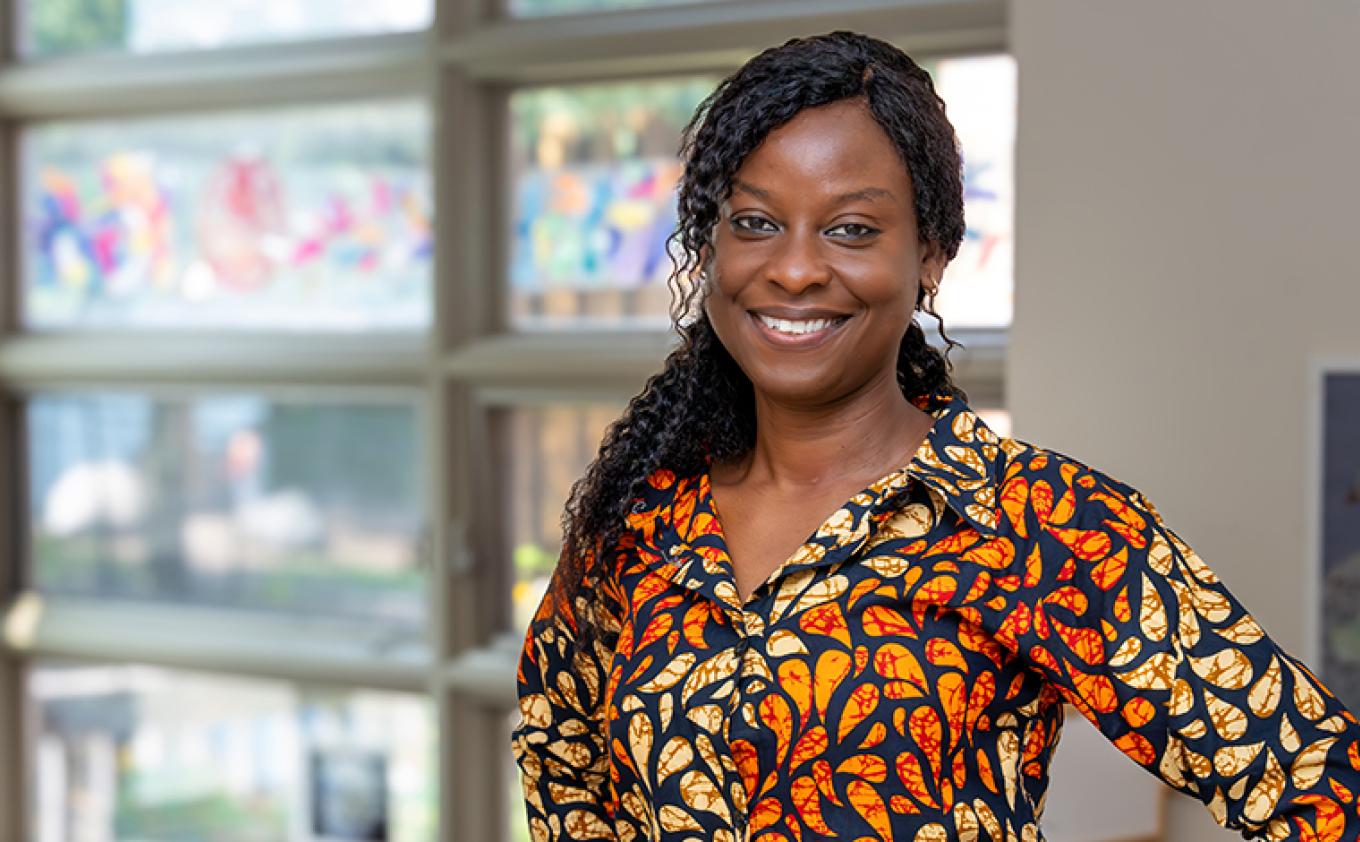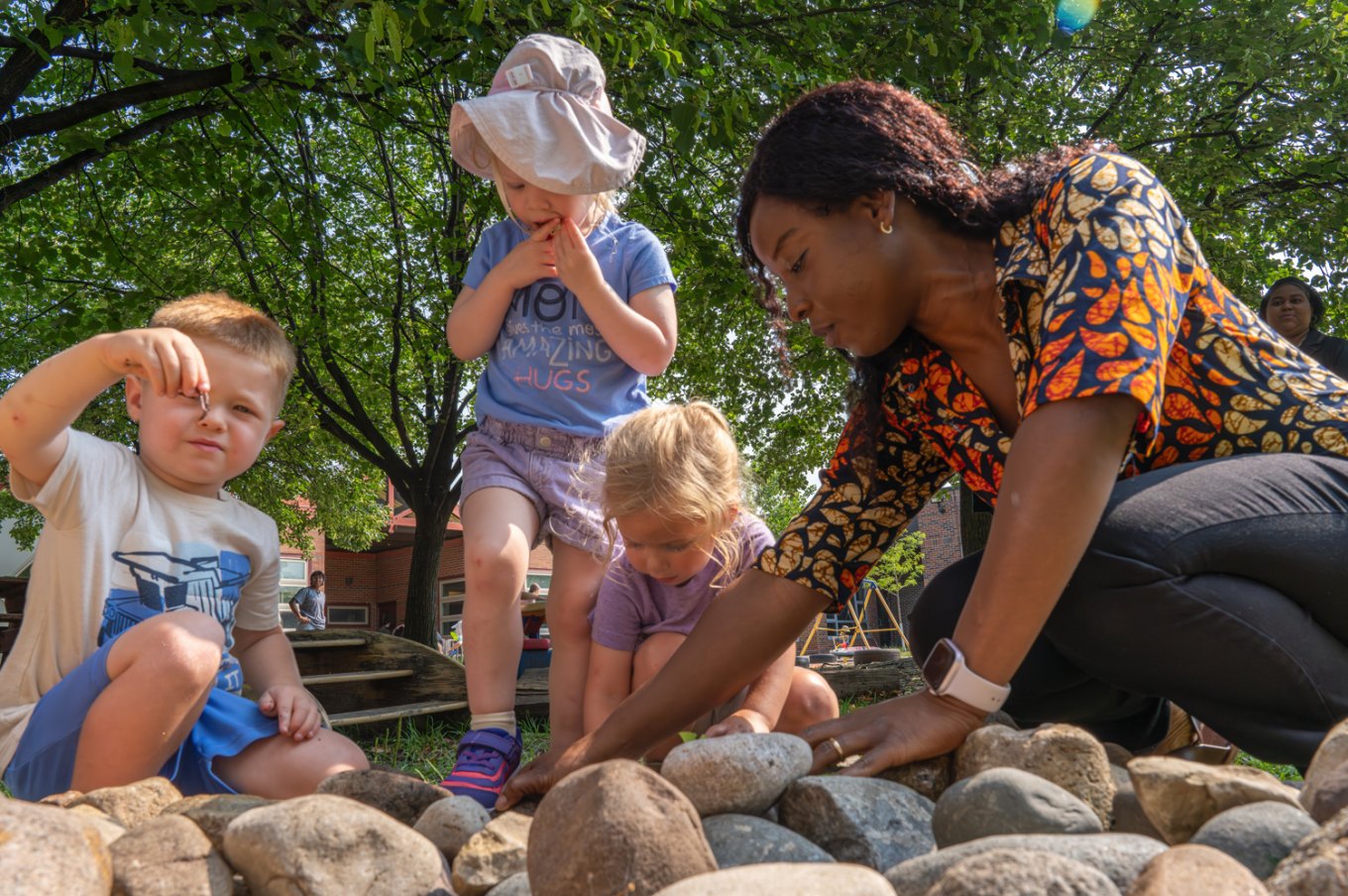2024 Fall

Culturally responsive practices in the early childhood classroom
CDLS PRESCHOOL TEACHER ENGAGES CHILDREN THROUGH THEIR LIVED EXPERIENCE
I grew up in Nigeria, a country with more than 500 languages and 300 ethnic groups. Coming from a family of six, I experienced both of my parents’ cultures and languages, which reflected the rich diversity of the country in terms of food, clothing, artifacts, festivals, religion, values, and beliefs. After spending the early part of my career in the legal field, I pursued my passion for working with young children as a kindergarten teacher. I had the opportunity to facilitate learning in young children in four different regions in Nigeria, where I gained a deeper understanding of how families value their cultural heritage and further developed my cultural sensitivity skills.
When I came to the United States to pursue a master’s degree in early childhood education at the Institute of Child Development (ICD), the professors in my program provided me with a strong knowledge base in research about best practices in culturally responsive, antiracist pedagogy that complemented my previous classroom experience. They also created a reflective environment that helped me to develop a better understanding of how to effectively apply this knowledge, a skill I use daily in my role as a preschool teacher in CEHD’s Child Development Laboratory School (CDLS).
Cultural identity and the lived experiences of young children
Education professor Geneva Gay coined the term “culturally responsive teaching” in her foundational book Culturally Responsive Teaching: Theory, Practice, and Research (2000). Gay argues that “when academic knowledge and skills are situated within the lived experiences and frames of reference for students, they are more personally meaningful, have higher interest appeal, and are learned more easily and thoroughly.” I experienced this during my master’s program as a student teacher in Saint Paul Public Schools. I utilized children’s identities and lived experience to guide lesson planning and activities within the classroom. For example, I used flags of the world as my introduction to a kindergarten counting activity. I made sure to include the national flags of the children in my classroom. A student from Peru exclaimed, “That’s the flag of Peru!” with a bright smile. The children also noticed the flags of Mexico, Somalia, Ethiopia, and China. I realized halfway through the lesson that the learning goals for the counting activity had already been achieved.
During another interaction, I engaged in a craft activity with a child. We used colored paper to make a bracelet. As we chose green, yellow, and red paper, the girl exclaimed, “Those are the colors of the flag of my country!” Our craft activity quickly changed from making a bracelet to making three Ethiopian flags. “One for my mom, one for my sister, and this is for me,” she said.

Aleyideino and students take part in a nature activity. (Photo by Jairus Davis)

Building inclusivity: The teacher as role model
Today, as a preschool teacher at CDLS, I place great importance on culturally responsive teaching. Although it’s helpful to have a diverse selection of books on my classroom shelf, reading books is only one piece of encouraging cultural appreciation. That’s why I have become more comfortable sharing my own identity and culture with the children. I do this by playing songs, bringing in musical instruments and other cultural artifacts, and greeting the children in my dialect. I also look for opportunities to bring the children’s lived experiences into the classroom. During our large group sessions, we are learning to greet our peers in languages from around the world. On show and tell days, I encourage families to bring in sensory items that represent their culture, allowing the children to interact with and experience different cultures. In my dramatic play area, I include items such as fabric, play food, and musical instruments from different cultures.
Carefully observing children at play allows me to use their interactions and activities to shape curriculum and inform lesson plans. Recent examples with two of the children in my preschool class, both of whom happen to be native Chinese speakers, come to mind. In one instance, I noticed that three-year-old Lin* uses Chinese for private speech while playing alone, so I reached out to Lin’s parents for help creating a lesson focused on their family’s culture. Lin’s parents kindly brought in traditional art supplies, demonstrated how to write Chinese characters, and helped all the children express themselves artistically. Lin’s classmate, three-year-old Kai, recently asked me, “Mrs. Amina, can you play ‘The Wheels on the Bus’ in Chinese?” I eagerly played the Chinese version of the song, and Kai’s face lit up with excitement. His parents, too, have been sharing their traditions with the class, and Kai sometimes brings in Chinese books and artifacts to share with his classmates. The children in my classroom often ask for familiar rhymes to be played in Hindi, French, Spanish, Chinese, and English. Through these experiences, I’ve learned about the positive impact and joy that culturally responsive teaching brings to the classroom community.
How culturally responsive classroom practices support antiracism
One of my goals as a teacher is to create a more connected, inclusive, and welcoming community where all children are valued. I also aim to help the children develop empathy and critical thinking skills. Ultimately, I want them to grow up empowered to challenge racism and prejudice and dismantle biased systems.
When teaching and learning in the classroom validate a student’s identity and experiences, it fosters a positive regard for both their own racial identity and that of their peers. In a preschool setting, this can be as simple as offering children a set of skin tone crayons and paints on the art shelf. In my classroom, children have many different skin tone colors to choose from when they make their portrait painting. I intentionally use rich language when I comment on their painting. For example, I might say, “Miguel is using a deep brown skin tone paint,” or “Corinna is coloring her picture with a fair beige skin tone crayon.” The children learn to use these words as they engage in conversations about our skin’s different shades. On one occasion, three-year-old Pa-Nhia said to me, “Your skin tone is beautiful.”
In her essay “Mirrors, Windows, and Sliding Glass Doors,” the influential scholar Rudine Sims Bishop compares books to windows that give readers a glimpse of an imaginary world. She points out that these windows can also become mirrors that reflect the reader’s own experience. Representation matters, not only in the books we read to children, but in our lesson plans and activities. As Bishop writes, “Our classrooms need to be places where all the children from all the cultures that make up the salad bowl of American society can find their mirrors.”
*Note: children’s names have been changed for privacy.
— AMINA ALEYIDEINO
Amina Aleyideino is a preschool teacher at CDLS. She received her MEd in early childhood education from ICD in 2022.
(Aleyideino photograph by Jairus Davis)